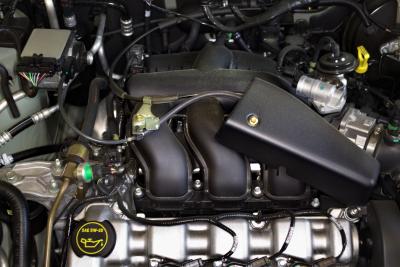
The acronym CFM stands for cubic feet per minute and is a measure of a carburetor or throttle body's airflow. Carburetors are commonly used in small engines and in high-performance automobile applications.
A carburetor's function is to blend air and fuel for the engine. Fuel travels from the fuel tank to the carburetor, is routed through passages and then mixed into the intake airflow to provided a precisely metered air/fuel mixture to the cylinders.
The history of carburetors dates back to the late 1800s. The small engines of the time required a simple method of mixing air and fuel. Those small engines found an application on automobiles and were widely used in vehicles until fuel-injection systems became commonplace.
The CFM ratings of carburetors were not widely used in early engines. Rather, the internal diameter of the venturi bore was referenced to give indications of airflow. In the 1920s, auto manufacturers began rating them in terms of the amount of air they could flow, and in the 1960s CFM ratings became widespread. For example: 540 CFM.
Aside from engine and aviation applications, it is most common to be able to refer to a rate of flow when selecting a carb for an aftermarket automotive application. Many carbs in the 500 to 750 CFM range perform well in street-driven cars, but many large displacement racing engines require flows in excess of 1,000 CFM.
It's getting rare to find factory original automobile with carburetors. All new vehicles are equipped with fuel-injection systems, but even those are rated in terms of CFM. Many motorcycles and other smaller engines have also begun incorporating fuel injection.